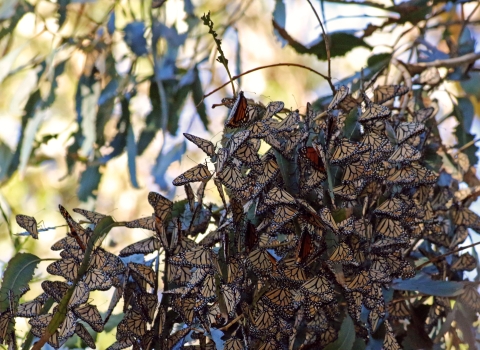On a warm fall day in October 2022, biologists from the North Carolina Wildlife Resources Commission (NCWRC) and the U.S. Fish and Wildlife Service released 517 endangered fish into the Cape Fear River. The small silvery Cape Fear Shiners swam from their holding bags and out into the current for the first time, marking an important milestone in the recovery of this unique species. The fish released were part of a head start program at Edenton National Fish Hatchery.
The Cape Fear Shiner (Notropismekistocholas) is a small minnow that has been listed as endangered since 1987. This species, which rarely tops 2 inches in length, is found in just a few waterways in the Cape Fear River basin of east central North Carolina, and nowhere else in the world! Dams throughout the Cape Fear basin have changed the flow and depth of the river, which has made it more difficult for the Cape Fear Shiners to thrive. In addition, dams divided the whole group of Cape Fear Shiners into many smaller groups. This separation can make them more at risk to drought, flooding and other poor environmental conditions and can cause more interbreeding among brothers and sisters.
Biologists have worked to improve conditions for the Cape Fear Shiner, including partnerships that encourage and assist dam removals that help restore the river to more natural conditions. One example is the 2005 removal of the Carbonton Dam, which allowed fish from above and below the dam to mix, and opened up several miles of river that were previously unreachable for the fish.
While efforts are underway to improve the habitat of the rivers, the number of Caper Fear Shiners is so low that even one severe chemical spill, hurricane, flood or drought could reduce their numbers past the brink, resulting in their complete loss. To boost numbers of Cape Fear Shiners as soon as possible, at the same time efforts are being made to improve the river conditions, a group of biologists set out to give these fish a “head start.”
The eggs and other early life stages are the most dangerous times in the life of a fish. By breeding these fish and raising their young in the relative safety of a hatchery, we may be able to boost their numbers sooner than waiting for their numbers to increase in the wild from improving river conditions alone. The North Carolina Wildlife Resources Commission (NCWRC) and the U.S. Fish & Wildlife Service teamed up to collect adult Cape Fear Shiners from areas that have higher numbers of fish. After collection, biologists at Edenton National Fish Hatchery simulated conditions in the wild at the hatchery to encourage the adult fish to spawn. After the fish spawned, the biologists hatched the eggs, and raised and the young fish. In October 2022, the Raleigh Ecological Services Field Office, NCWRC, and Edenton National Fish Hatchery released their first group of Cape Fear Shiners into the Cape Fear River. This team of biologists plan to continue “head starting” of Cape Fear Shiners for several years while checking on their progress.





